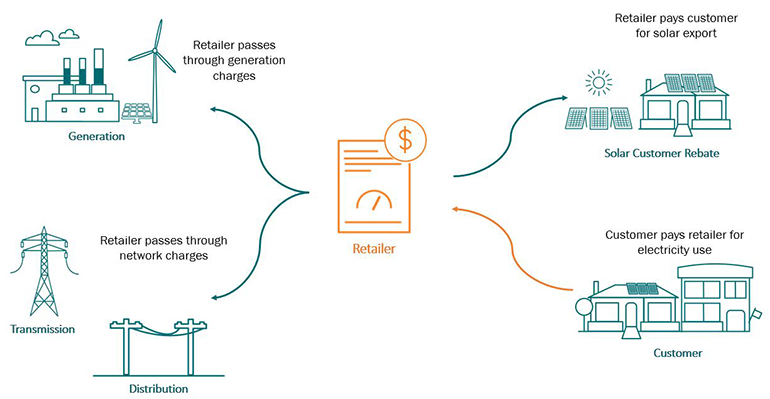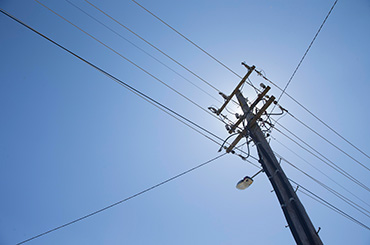Network pricing makes up a portion of your electricity bill. Take a look below to understand how these charges are calculated.
Your electricity retailer collects the costs to cover the supply of power to your home and/or business. The retailer is responsible for passing through the generation and network charges on your behalf, as well as paying rebates for solar exports to eligible customers.

How the cost of electricity is broken down from generation to a customer’s bill
A customer’s energy bill is made up of a combination of electricity services covering generation through to the retail service management.
Each area contributes to a percentage of the cost distribution which is mainly outlined by the Australian Energy Regulator (AER). The AER determines the amount that network distributors, like Essential Energy, can charge for their services. They also determine the Default Market Offer, which is the highest amount that retailers can charge customers for electricity.
Customer are encouraged to shop around for the best retail price. For a free, independent comparison of retail offers, visit the AER’s website, www.energymadeeasy.gov.au.
For tips on how to save money on your electricity bill, visit our home energy efficiency page.
Retail Electricity Cost Distribution in the National Electricity Market:
Generation - a mix of traditional coal and gas fired plants, as well as large and small-scale renewable energy from solar and wind connections to the National Electricity Market.
Networks – the poles and wires, plus other infrastructure, that transports generated electricity to consumers. The network is broken down into three cost areas:
- Distribution network - transports electricity at a lower voltage to homes or businesses (Essential Energy)
- Transmission network - efficiently transports high-voltage electricity over large distances (Transgrid).
- Federal and State government policies, including Climate Change Levy and the NSW Electricity Infrastructure Roadmap.
Retail - customers buy their electricity through retailers who package all the costs and associated risks into retail products.
The below bill percentage breakdown is based on the Australian Energy Market Commission (AEMC), Residential Electricity Price Trends 2021, Final report, 25 November 2021.
- Generation (36%) – coal and gas, large and small-scale renewable energy (solar and wind).
- Transmission (9%) – high-voltage over large distances – Transgrid, Powerlink, Ausnet & Electranet.
- Distribution (38%) – transports electricity at a lower voltage to homes or businesses – Essential Energy.
- Federal and State Schemes (8%) – Climate Change Levy and the NSW Electricity Infrastructure Roadmap.
- Retail (9%) – aggregation of all costs, wholesale market hedging and margin.
Over the last few years, distribution costs have varied between 30% and 40% which is the result of a few factors. These include interest rates, the Consumer Price Index (CPI), bond rates, to some extent the wholesale market, and of course, it changes with consumption. If consumption rises or falls seasonally, then it will once again impact the proportion of the bill.




